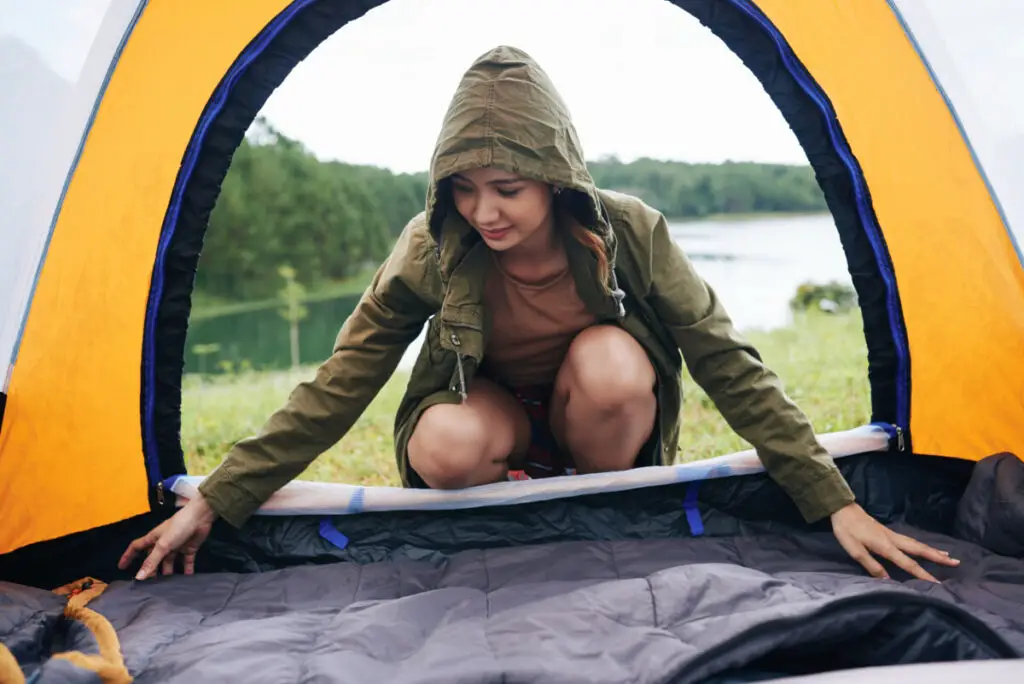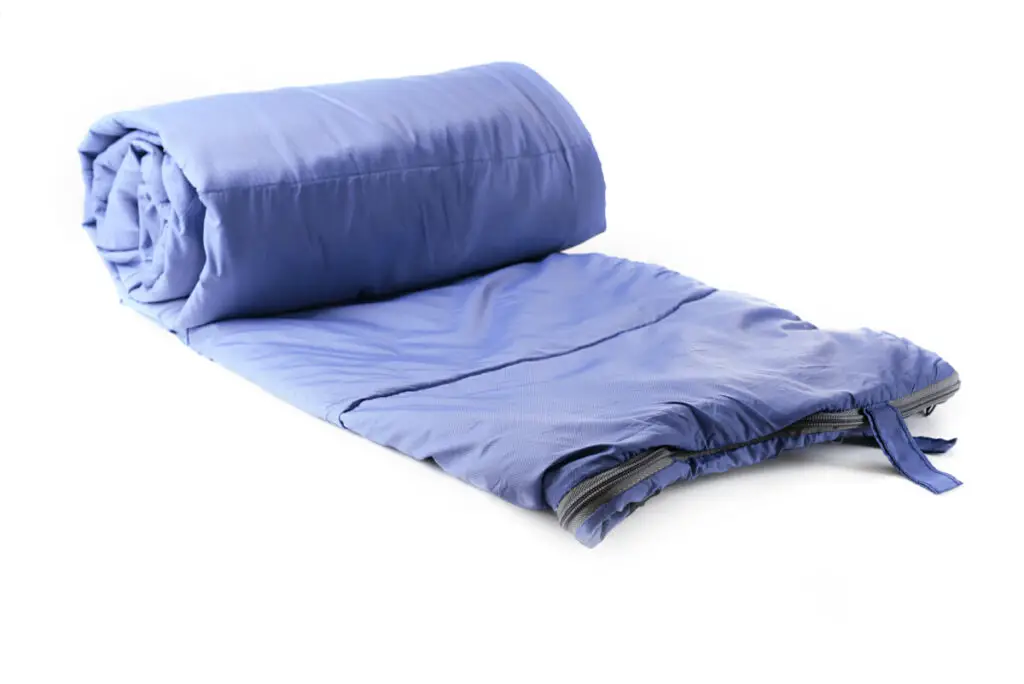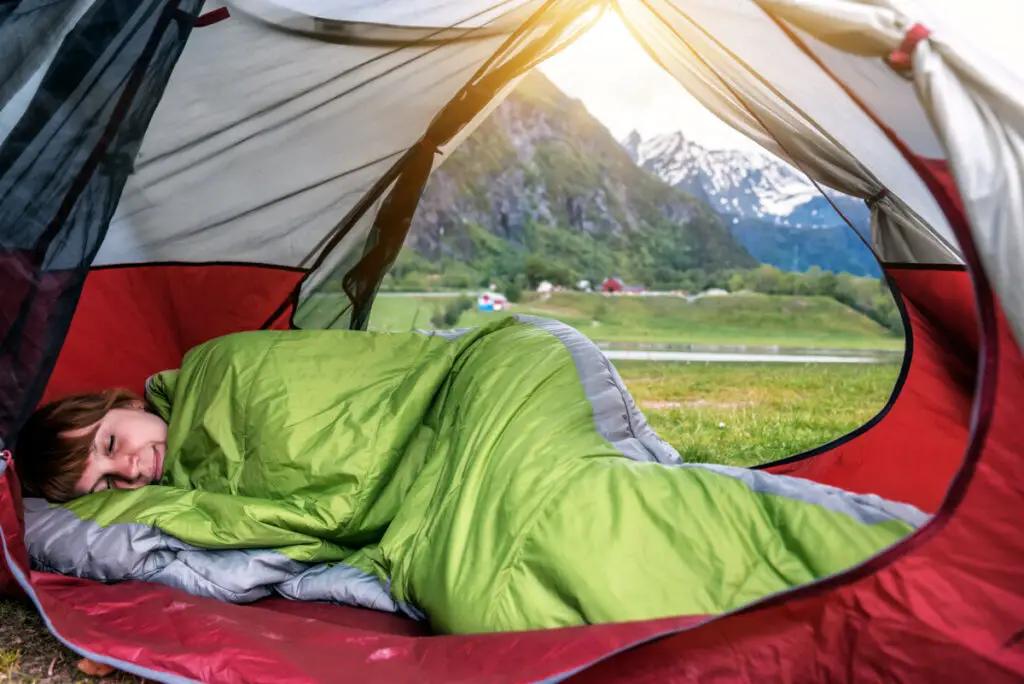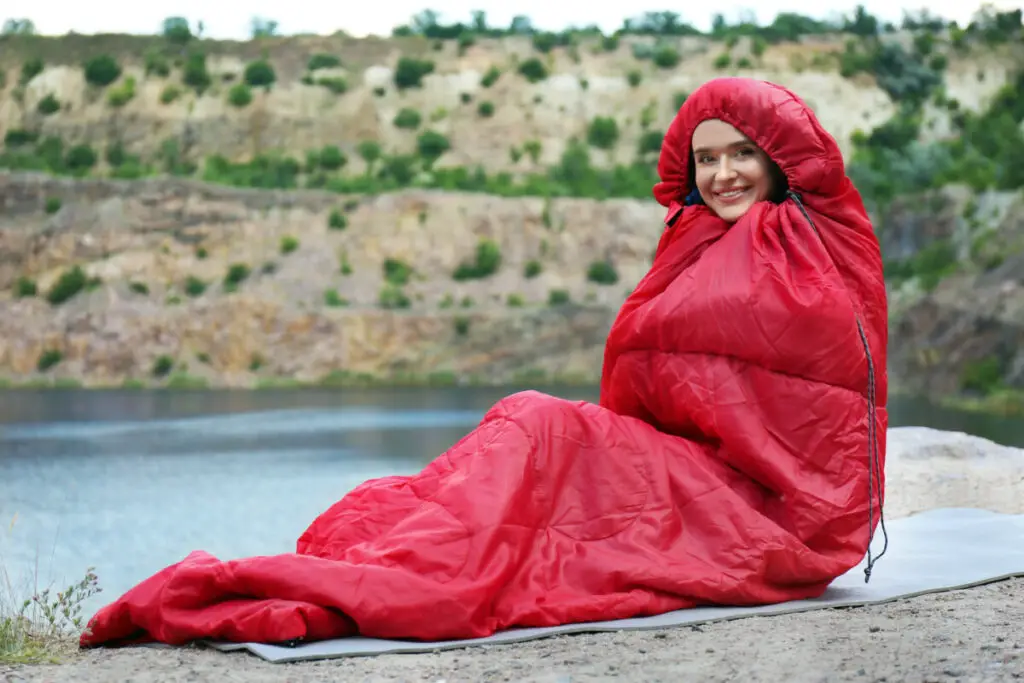
Whether you’re a sprawled out, curled up, diagonal, or a something in-between-kind-of-sleeper, everyone needs protection from the elements when camping. As warm spring and summer nights give way to chilly autumn eves and frigid winter midnights, having a sleeping bag that effectively traps heat is essential. On top of that basic need is the additional desire for comfort.
Mummy sleeping bags can suffice for side sleepers, even with their movement-restricting fashion. However, for those truly adamant about a sleeping bag that accommodates their sleeping style in addition to keeping warm at low temperatures, there are many alternatives to the classic mummy bag.
Roughly 74% of the population are side-sleepers, making it the most common sleeping position. However, this little fact doesn’t seem to preclude many campers from buying and using mummy bags. What are the options for those who truly can’t get comfortable rest without some mobility?
When to Use a Mummy Bag
Mummy bags are specifically designed so that there is as little air surrounding a person’s body in the bag as possible. To do this, the bags are cut to fit as snugly around a person as they can without completely restricting movement. This makes them highly efficient at retaining heat in colder climates, as the amount of heat generated by a body for the person to remain warm is far less than in roomier sleeping bags.
While this makes them ideal for cold camping, there are some noticeable downsides. First, the heat-saving design limits a person’s mobility, making many feel constricted or occasionally claustrophobic. It is also easiest to sleep in a mummy bag on one’s back, something that does not feel natural to all sleepers.
That’s the thing about mummy bags—they are efficient as all-get-out at keeping you warm and snug, but not so much at keeping you roomy and comfortable. The phrase “snug-as-a-bug-in-a-rug” comes to mind when thinking of the comparison. That being said, mummy bags are not the only sleeping bag option, and in fact, might not always be the best option!
For warmer conditions, you might fare better using a classic rectangular sleeping bag than you would in a mummy bag. Because mummy bags are designed for maximum heat retention, a person could easily get uncomfortably warm camping in one during, say, the summer. Check the conditions expected for your camping trip ahead of time and plan accordingly.

How to Be Comfortable in a Mummy Bag
One of the first tips for sleeping comfortably in a mummy bag is actually just a tip for sleeping on the ground in general. Choose a sleeping pad that will be gentle on your side-sleeping pressure points. The ground can be bruising to sleep on, even with cheap sleeping pads in addition to sleeping bags purchased at the store. Take note of how you sleep and bring supplies to cradle your preferred position. A pillow may be a good addition to provide support for your neck.
If sleeping on your back just isn’t an option,—hello, sleep apnea!—try rolling the sleeping bag with you, so that it lays on its side at the same time you do. While you might resemble a caterpillar ever so slightly, it is an effective way to make do with the materials you have.
Pay attention to the size of your mummy bag as well. Most companies will provide a few sizes from children to adults, with some options being roomier than others. If you feel mobility is worth the sacrifice of a little efficiency, spring for an oversized bag. Some people are even able to roll comfortably to their sides within the bag itself!

Side Sleeper Options
Some brands have chosen to offer additional sleeping bag options for campers to choose from. Spoon-shaped mummy bags, side-facing hoods, bags with more room at the knees and elbows, or adjustable shaped sleeping bags are all excellent alternatives. That being said, while these sleeping bags are still crafted to retain as much heat as possible, the extra bulk will ultimately make them not quite as effective as the mummy style.
The Sidewinder sleeping bag is one such option designed specifically for side-sleepers. Instead of the cut that encourages sleeping on one’s back, the hood of this bag is cut to the side and includes a pocket to keep a pillow in place as you move around. It also features extra cushioning at the hips and feet.
Modified mummy bags can also be a good choice for side sleepers. Zipper-free mummy bags have an internal fold that can be swept aside or tucked in like a comforter, then secured with drawstrings. This design is far less constricting than regular mummy bags, allowing for more movement without sacrificing the efficiency of shape.
An option similar to this is a quilt bag, which is manufactured as a blanket with the structure of a sleeping bag. It could be similar to how origami is folded to a particular shape, or if tortillas were specifically shaped to form a burrito. This sleeping bag also has pockets for pillows, a vent at the feet, and a hide-away hood similar to the more typically styled cold weather sleeping bags.
The Nemo sleeping bag is one of the spoon-shaped bag options, though the actual design could be said to more closely resemble an hourglass. The bag provides extra room at the elbows and knees on either side, allowing a person to move about to either side as they sleep. Any heat loss caused by the bulk of the bag itself is counteracted by the blanket fold around the face, which helps to prevent any potential drafts.
Zenbivy Bed sleeping bags are perhaps the most versatile of the alternatives on this list, representing the best of both worlds. The bed includes a bottom “sheet” that can attach to a sleeping pad and zips onto a heavy quilt like a bed. The classic mummy bag shape can also be achieved by cinching up the bottom of the quilt and zipping it shut.


